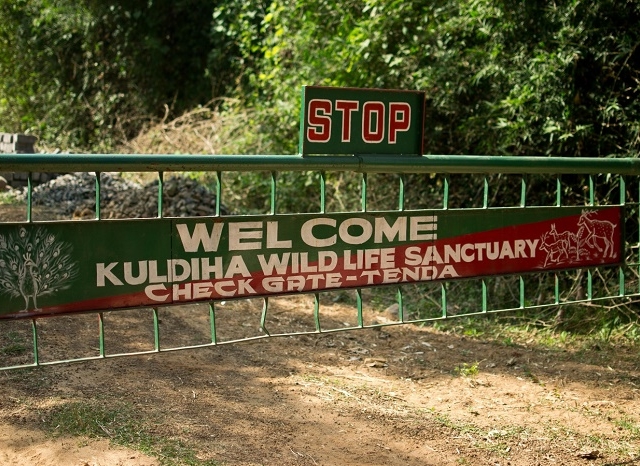The National Green Tribunal (NGT) recently addressed a serious issue concerning the Kuldiha Wildlife Sanctuary, located in the Balasore district of Odisha. The NGT’s intervention reflects its commitment to safeguarding the delicate balance between development and conservation.
Mining Activities in the Eco-Sensitive Zone
Illegal mining is happening in a sensitive area of the Kuldiha Wildlife Sanctuary, and someone has complained about it. They are worried because this mining is taking place near a place called Similipal-Hadgarh-Kuldiha-Conservation Reserve, specifically in the Sukhuapata Reserved Forest area.
The person who complained said that around 97 places where sand is being dug up have been given permission for this mining. They’re saying that this is not allowed according to a law called the Forest (Conservation) Act, which was made in 1980. They are concerned that these mining activities could harm the environment and the animals living there.
The person who complained also talked about a decision by the highest court in India, called the Supreme Court. This decision said that mining can only happen if they have a good plan to take care of the animals and nature. They also mentioned that an important path that elephants use should be protected as a special area.
In simple words, people are digging up sand in a place where they shouldn’t be, and this is bad for the environment and animals. The law says they can’t do this, and there’s a court decision that supports this too.
About Kuldiha Wildlife Sanctuary
Kuldiha Wildlife Sanctuary is situated in the northeastern part of Odisha, bordering the Simlipal National Park. Covering an expanse of 272.75 square kilometers, this sanctuary is a part of the Eastern Highlands moist deciduous forests ecoregion, boasting a diverse range of flora and fauna.
Geographical Context
Situated in the Chota Nagpur Plateau region, Kuldiha Wildlife Sanctuary is strategically connected to the Simlipal National Park through the Sukhupada and Nato hill ranges. Its location within this verdant landscape adds to its appeal and ecological significance.
Ecological Diversity
Kuldiha’s lush environs are dominated by mixed deciduous forests where the majestic Sal tree reigns supreme. This sanctuary is a sanctuary for a variety of animals, including Tigers, Leopards, Elephants, Gaurs, Sambars, Giant Squirrels, Hill Mynas, Peafowls, Hornbills, and a multitude of migratory birds and reptiles.
Mayurbhanj Elephant Reserve
A remarkable feature of Kuldiha is its association with the Mayurbhanj Elephant Reserve, extending across Simlipal, Kuldiha, and Hadgarh wildlife reserves. Locally referred to as Tenda Elephant Reserve, it forms a safe haven for these gentle giants.
Conservation Through Community-Based Ecotourism
Recognizing the importance of sustainable conservation, Odisha’s government adopted a community-based ecotourism model for Kuldiha. This model not only aids in the preservation of nature’s pristine state but also contributes to the livelihoods of local communities and tribes residing within the sanctuary.
Unique Attractions
The Kuldiha River and other water bodies within the sanctuary provide a lifeline for both wildlife and vegetation. The picturesque Duduma waterfall is one of the prime attractions, drawing tourists and photographers.
Find More General Studies News Here




 Weekly One Liners 15th to 21st of Decemb...
Weekly One Liners 15th to 21st of Decemb...
 World Basketball Day 2025 Celebrates Bas...
World Basketball Day 2025 Celebrates Bas...
 UN Celebrates Second World Meditation Da...
UN Celebrates Second World Meditation Da...







